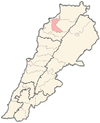
The Greek Orthodox Patriarchate of Antioch, also known as the Antiochian Orthodox Church and legally as the RūmOrthodox Patriarchate of Antioch and All the East, is an autocephalous Greek Orthodox church within the wider communion of Eastern Orthodox Christianity that originates from the historical Church of Antioch. Headed by the Greek Orthodox patriarch of Antioch, it considers itself the successor to the Christian community founded in Antioch by the Apostles Peter and Paul. It is one of the largest Christian denominations of the Middle East, alongside the Copts of Egypt and the Maronites of Lebanon.
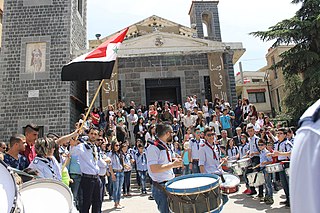
Arab Christians are ethnic Arabs, Arab nationals, or Arabic speakers, who follow Christianity. The number of Arab Christians who live in the Middle East was estimated in 2012 to be between 10 and 15 million. Arab Christian communities can be found throughout the Arab world, but are concentrated in the Eastern Mediterranean region of the Levant and Egypt, with smaller communities present throughout the Arabian Peninsula and North Africa.

South Governorate is one of the governorates of Lebanon. South Lebanon has a population of 590,000 inhabitants and an area of 929.6 km2. The capital is Sidon. The lowest elevation is sea-level; the highest is 1,000 meters. The local population is religiously diverse and includes Shia and Sunni Muslims, Druze, Eastern Orthodox, Maronite, Protestant, and Greek Catholic Christians. Temperatures can drop to 4 °C during winter with much rain and snow on the higher ground. In the humid summer, temperatures can rise to 30 °C in the coastal areas. The governorate has several rivers: the Litani, Deir El Zahrani, Naqoura, Awali, Qasmiye, and Hasbani. The area is famous for its citrus and banana farms. Its main cities are Sidon, Tyre and Jezzine.

Amioun is the capital of the predominantly Greek Orthodox Koura District in North Lebanon.

Southern Lebanon is the area of Lebanon comprising the South Governorate and the Nabatiye Governorate. The two entities were divided from the same province in the early 1990s. The Rashaya and Western Beqaa districts, the southernmost districts of the Beqaa Governorate.
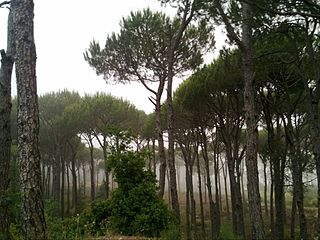
Ras el-Matn or or is a Lebanese town and municipality in the Baabda District of Mount Lebanon Governorate stretching over 1300 hectares. The town has a population of nearly 11,000 inhabitants who are Druze.

Byblos District, also called the Jbeil District, is a district (qadaa) of the Keserwan-Jbeil Governorate of Lebanon. It is located to the northeast of Lebanon's capital Beirut. The capital is Byblos. The rivers of al-Madfoun and Nahr Ibrahim form the district's natural northern and southern borders respectively, with the Mediterranean Sea bordering it from the west and Mount Lebanon from the east, separating it from the adjacent district of Baalbek in the Beqaa Valley.

Ras ash-Shaq'a is a promontory in north Lebanon, known in antiquity as Theoprosopon and Lithoprosopon. The promontory is situated between the ancient cities of Batroun and Tripoli; it creates a massive barrier that cuts through the coast of Lebanon, making it historically difficult for travelers to circumvent. Today's modern, coastal highway runs through the mass via two tunnels.
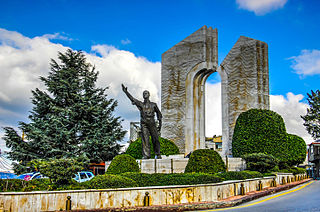
Bikfaya is a town in the Matn District region of Mount Lebanon. Its stone houses with red-tiled roofs resting amidst pine and oak forests make Bikfaya one of the most sought-after suburbs of Beirut and one of Lebanon's most popular summer resorts. An old town, among its monuments is the church of Mar Abda, built in 1587.
Chekka is coastal town located in North Lebanon. It is located north of Râs ach-Chaq’a’ and Herri beaches, or Theoprosopon of classical times and south of the ancient Phoenician port of Enfeh and the city of Tripoli. The origin of the word is believed to be Canaanite from the word Chikitta. Chikitta was mentioned Amarna letters in Egypt as a coastal town situated in the geographical area of modern Chekka. Until now there are no Canaanite archeological findings in Chekka backing this hypothesis. Chekka's modern history is clear. The high land in Chekka now known as Chekka Al-Atika was resettled around 300 years ago and the fertile valley of Chekka was cultivated in the intention of making Chekka a Maronite stronghold on the Lebanese coast. Many families moved from Mount Lebanon to Chekka at that time.

Koura District is a district in the North Governorate, Lebanon.
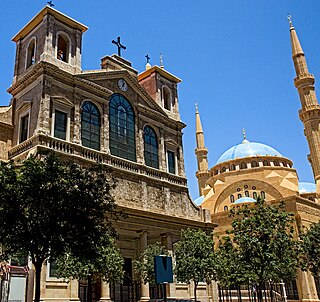
Lebanon is an eastern Mediterranean country that has the most religiously diverse society within the Middle East, recognizing 18 religious sects. The recognized religions are Islam, Christianity and Judaism.
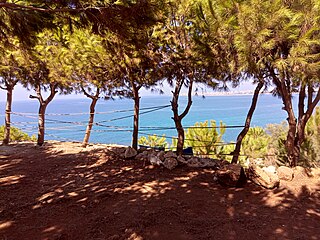
Ras Maska is a village located in the Koura District in the North Governorate of Lebanon.
Patriarch Ignatius III Atiyah was Melkite Patriarch of Antioch from 1619 to 1634. The first years of his patriarchate were marked by the split of the Melkite Church in two factions, a situation that lasted till the Synod of Ras-Baalbek held in 1628 which confirmed Ignatius Atiyah as the only Patriarch and ruled about the independence of the Melkite Orthodox Church.

Ras Baalbek is a village in the northern Beqaa Valley in Lebanon.
Aaba is a village in the Koura District of Lebanon, whose inhabitants are Greek Orthodox and other confessions. It is located 240 metres above sea level and has an area of 0.16 square kilometers. In 1953, Aaba had a population of 288 living in 31 households. By 2017, the town had 807 registered voters, of whom 698 were Greek Orthodox, 62 were Sunni and 47 Maronite.
Kfarhazir is a village in the Koura District of Lebanon. It is 350 meters above sea level, and has an area of 12.1 square kilometres (4.69 sq mi), and is the largest town in Koura District by size, with a population of about 60000. The population are Greek Orthodox and Maronite. In 1953, the town had a population of 917 with 168 households. The current mayor of Kfarhazir is Fawzi Al Maalouf.
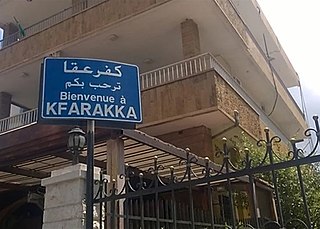
Kfaraakka also spelled Kferaakka is a village in the Koura District of Lebanon. It covers an area of 5.6 million square meters with an estimated population of 3,500. It had a population of 1,196 in 1953.

Lebanese Greek Orthodox Christians refers to Lebanese people who are adherents of the Greek Orthodox Church of Antioch in Lebanon, which is an autocephalous Greek Orthodox Church within the wider communion of Eastern Orthodox Christianity, and is the second-largest Christian denomination in Lebanon after the Maronite Christians.
Deir Kifa is a local authority in Southern Lebanon, located in Tyre District, Governorate of South Lebanon.



















